Look out for any distinctive characteristics on a roof as you stroll through your neighborhood. You may see many different types of roof vents, all of which are essential for the proper function of your roof and home.
With a new roof, you can customize the look by selecting the right vent to complement your desired aesthetic and the attic’s existing ventilation system. But there seems to be a wide variety of vents for the roof; what are the options?
Since 1987, the experts at The Roof Doctors have been assisting Californians with their roof vents and attic ventilation systems. If you want a roof vent but don’t have much money, we’ll help you find the best option within your price range. Attic ventilation systems and common types of roof vents will be covered in this article.
What are the Types of Roof Vents?
The airflow from your attic vents is like the lungs of your home. It should be used in conjunction with vents that enable hot air to escape for optimal performance.
There are two distinct categories of attic ventilation systems: active and passive. Active ventilation draws fresh air in from the outside, and stale air is expelled. Attics with passive ventilation rely on the wind and other natural forces to circulate the air.
Both ventilation systems are effective, and it is difficult to choose between them. Problems can arise, though, if your attic does not have adequate ventilation.
Exhaust vents can cool the attic space more efficiently by adding intake vents. Additionally, because they prevent ice dams, they reduce energy expenses and lengthen the life of your roof. Intake vents allow cooler outdoor air to enter the house. Warmer air continues to rise and escape as cooler air moves in. The house’s intake vents should be strategically placed to equalize pressure in low and high-humidity areas.
The highest point of the roof is outfitted with exhaust vents. Their principal function is to ensure that your attic’s hot air, stale smells, and dampness can freely escape. If there aren’t any exhaust vents, the buildup of heat and moisture in a building’s interior can damage everything from the roof to the paint on the walls. Common types of exhaust ducts include:
The types of active roof vents
Having read this, you should have a better understanding of attic ventilation and the two ventilation systems available. Different systems offer a variety of roof vent designs to suit your needs.
Air is drawn in through the intakes and expelled through the exhausts in an active ventilation system. You can find turbine vents, power vents, ridge vents, and solar-powered vents among the most typical active roof vents.
Turbine vents
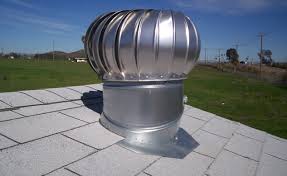
A turbine vent, often known as a whirlybird, may move air in your attic even when the wind isn’t blowing by creating a drawing effect via convection (heat rising). This vent circulates attic air 10–12 times per hour if correctly installed.
Turbine vents have slats and free access to the attic, so many think insects can get in. Unless the vent is destroyed, however, nothing like that should happen.
Roof turbines are ineffective on days with a light breeze or no breeze at all since the inner blades need winds of at least 5 to 6 miles per hour to activate and spin. When there is no breeze in the summer, this roof exhaust system will not be enough to keep you comfortable.
The effectiveness of whirlybirds as ventilation is debatable, even on windy days. They can only evacuate a limited amount of heated air from the attic compared to box or off-ridge vents. This venting method will reduce roof emissions in most homes with a few roof turbines.
Hard-Wired Powered Attic Vents
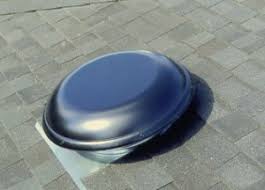
Power vents are the low-profile, circular vents common on most roofs. They use electricity to extract warm air from the attic and are placed towards the ridge (top) of the roof.
You should use a humidistat to control the operation of your electricity vents during the colder months. If left unchecked, attic condensation can shorten the lifespan of your roof or cause leaks. Is your roof leaking? We will find it and fix it.
They successfully remove hot air, albeit at the expense of increased utility bills. Maintaining a stable attic temperature for the rest of the house is a primary benefit of ventilation.
To prevent the growth of mildew, a steady air current must be maintained; nevertheless, the most pressing requirement is the venting of hot air from the attic. Less powerful vents recirculate air instead of releasing it, which is as harmful as no vents for home ventilation.
When considering all of the aforementioned potential drawbacks, it’s important to factor in the electricity cost. Hard-wired electricity attic vents must be connected to your home’s electrical system, which will raise your utility bills.
Traditional hard-wired systems have shifted to solar power due to higher running costs over the past few years. Power vent motors have a high failure rate; be ready to replace them.
Solar Powered Attic Vents
Vents powered by the sun are similar to traditional vents in function. Solar-powered attic vents reduce most of the electricity costs of hard-wired vents, but they still have significant limitations.
Energy-wise, these vents are ideal. However, they shut off when the solar battery is being charged. Thus, as the battery recharges, you may run the air conditioner longer, increasing your monthly energy bills.
Because of these drawbacks, it is recommended that you exhaust your roof using more traditional, natural techniques. A motorized fan, even one driven by solar panels, is unnecessary if your attic already has adequate ventilation.
Ridge vents with a baffle
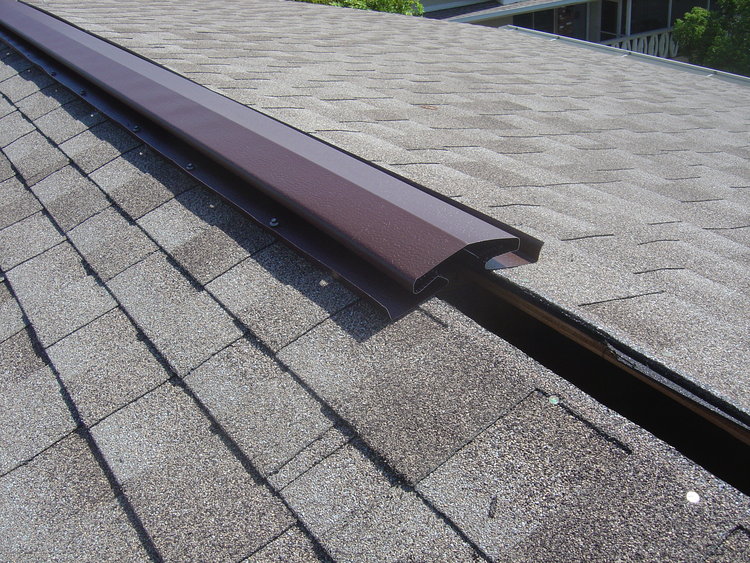
A ridge vent is a vent that extends horizontally across the peak of a roof. Roofs with ridge vents are designed to allow the hottest air in the attic to escape via the top of the roof.
These vents are widely used, but they have one big drawback: without a filter, dirt, insects, rain, and snow can enter the attic. A passive ridge vent does not have a baffle (a collection of chutes that direct airflow into the attic).
The types of passive roof vents
For ventilation, passive vents rely on wind and convection to move air through your roof space. These vents are silent, require minimal upkeep, and have no moving parts.
Common passive roof vents include the gable end vent, the ridge vent without a baffle, and the static vent.
Ridge Vents without a baffle
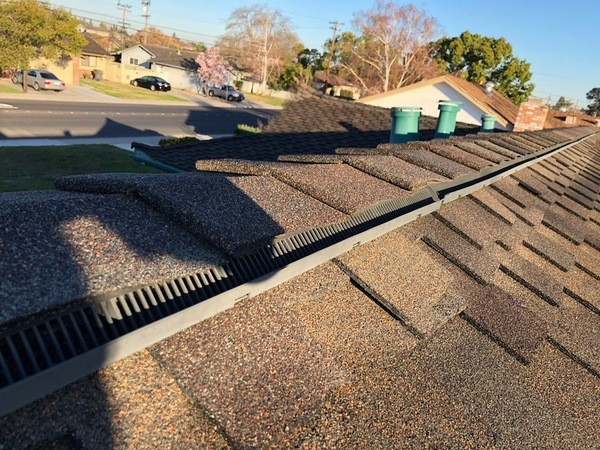
Ridge vents are the most usually placed exhaust vents. A ridge vent is a vent that extends horizontally across the peak of a roof.
It is carved into the ridge and extends the whole length of the ridge, much like the operational form of this sort of roof vent. In this case, though, there is no baffle (chutes that provide a channel for air to flow). If your ridge vents don’t have a baffle, debris, rain, snow, insects, and the like can easily find their way into your attic.
Since ridge vents are situated at the roof’s peak, they are ideal for releasing the hottest air from the attic. In addition, they have the necessary surface area to release a lot of hot air because they span the entire roof.
The natural movement of hot and cold air is utilized by vertical ventilation. Relatively cool air enters at the bottom and leaves at the top. This method, like gable vents, is superior to horizontal or cross-venting.
A ridge vent provides the best possibility for vertical ventilation in conjunction with intake vents located at the base of your roof line (such as a soffit vent).
Ridge vents provide several advantages over conventional exhaust vents; thus, we recommend adding one if your home’s layout allows it. These advantages include its attractiveness, location on the roof line, the area covered, affordability, and broad use.
Box Vents
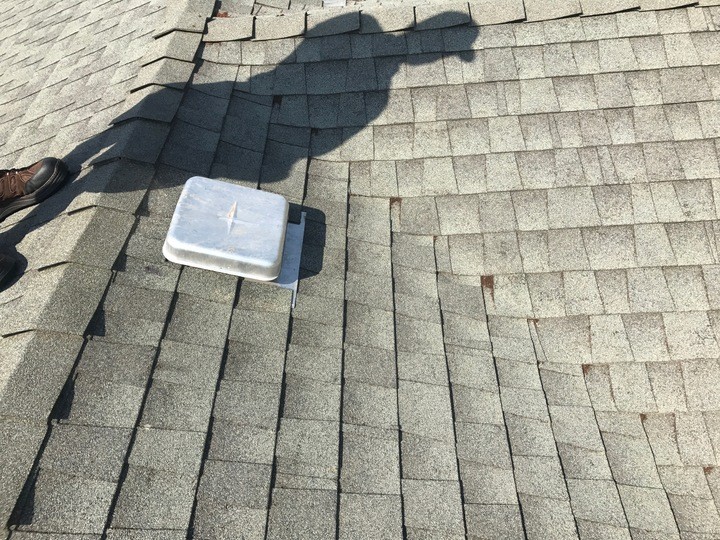
One of the two most common types of exhaust vents on contemporary roofs is box vents (also known as turtle vents, louver vents, or static vents). While their compact size is generally a disadvantage, it provides some flexibility compared to other types of vents.
Box vents can be strategically placed in smaller locations that require air ventilation but cannot use a ridge vent due to their lack of need to go across the full peak of the roof. The heated air in your attic rises and is expelled through the vents because of the vents’ ability to let cooler air in.
Box vents, like off-ridge vents, are a good choice for roofs with a lot of angles and valleys. On the other hand, ridge vents are typically more efficient if your roof is greater than 20 feet in width. However, you should consult a reliable roofer, as this is not always the case.
Gable end vents
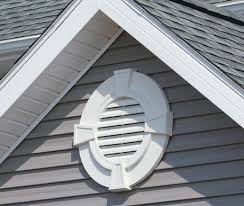
Intake systems that use gable vents are a classic example of a ventilation method that has since fallen out of fashion. Because a vent can be installed on either side of a gable roof, gable vents are typically only seen on homes with that roofing type.
Gable vents use horizontal or cross-ventilation instead of vertical ventilation to circulate attic air. It’s assumed, for the most part, that air enters the attic from one side and exits the other.
Gable vents can be found in various sizes and shapes, but the most common is a triangular opening just below the roof’s ridge. The cross breeze created by these vents is diminished by the presence of rafter beams, peaks, valleys, and dormers on roofs with more intricate designs.
Gable vents may hinder the efficiency of other vents, especially vertical vents like soffit and ridge vents. This is because airflow from a vertical intake to a vertical exhaust is often interrupted by the cross breeze.
Soffit Vents (Most Popular Intake Vent)
The most common type of roof intake venting is soffit ventilation. Soffit vents (for intake) and ridge vents (for exhaust) make up half of the most common ventilation setups (for exhaust).
You can put soffits, like intake vents, on the eaves, or the overhanging edges, of your roof. Soffits come in various styles, but the most popular ones feature openings near the top that let fresh air into the attic and force the heated air out the chimney.
Very few pests can squeeze through the tiny openings in your soffit. Soffit vents come in two styles: continuous vents that run along the soffit and smaller, freestanding vents.
Vents in a home’s soffit that run continuously are much longer and usually cover the entire length of the eaves. More air can flow through if there’s more surface area.
Soffit vents, taken individually, resemble box vents more closely. They are 5 or 6 feet apart along the eaves and are smaller, typically rectangular, and recessed.
A more recent innovation in roof ventilation, fascia vents (also known as over-fascia vents), are ideal for roofs without adequately large eaves to accommodate soffit vents. A fascia vent is installed above the fascia board and gutter, below the initial course of shingles.
Fascia vents, in contrast to soffit vents, which rely on air rising, allow air intake just where the wind is hitting the roof. For homes without soffit vents or for roofs with complicated shapes, over-fascia vents are a better option than soffit vents alone.
Drip Edge Vents
A special roofing material called a drip edge is installed just under the first row of shingles to guide water away from the roof and into the gutters. Get leaf gutter guards today.
Drip edge vents are an easy way to insert intake into the conventional roofing material, and they can be either built into the drip edge or installed as an afterthought.
Because of their placement, drip edge vents are distinct from fascia vents. Of course, the installation process is extremely involved and should be left to the experts.
Because of their construction and functionality similarities, the benefits and drawbacks of fascia vents also apply to drip edge vents. Drip edge and fascia vents work together to bring in air from below the roof, then direct it upwards along the underside and out via the peak exhaust.
Due to their limited surface area, over-fascia vents and drip edge vents may not be very effective.
Cupola Vents
Cupola vents are one of the least common kinds of roof vents because of their high price, and high level of complexity, and not everyone has the major problem they were meant to answer. While cupola vents were once utilized for ventilation and cooling, they are primarily used for aesthetic purposes.
In terms of ventilation, cupolas can take on several different forms. Some have wooden louvers to keep out the weather, while others let in as much light and air as possible.
Firstly, they provide better airflow. Most significantly, they are a fun way to make your roof stand out and make your house seem more like a home.
What are the advantages of having a well-ventilated attic?
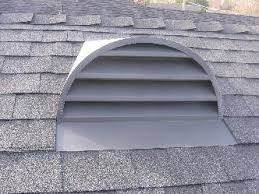
The most frequent types of roof vents are now known to you. Ventilation needs and aesthetic preferences should be considered when selecting a roof vent.
The most crucial aspect of attic ventilation is not the specific type of roof vent you choose. If not, it will cause a slew of expensive complications.
That’s why you must understand why attic ventilation is necessary for the health of your roof and the rest of your house. Due to the significance, we have already explained it to you.
FAQ
Most homes would benefit from having soffit vents for air intake and a ridge vent for exhaust.
In the absence of a ridge vent, box vents are the next best thing for removing stale air from a property. Fascia vents are the next best thing to soffit vents, and they are an option for homes that can’t have soffit vents.
All this being said, it’s important to remember that every house is unique. While the type and shape of your roof will determine which vent works best for your home, there are a few things on which we can all agree:
It’s preferable to have a dual-vent system rather than just one. Second, go with the latter if you have to choose between horizontal and vertical ventilation. We’re here to help if you’re considering getting a new roof and want some advice on best ventilating your home.


